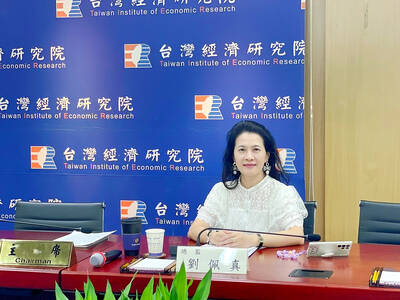Energy-hungry Vietnam is planning to build a US$2 billion mega-dam on the Mekong river of Laos and to construct several other large hydropower projects in the neighboring country.
Vietnam's main energy company expects to wrap up a feasibility study by April for a dam near Luang Prabang, the former Lao royal capital, that would dwarf existing dams in the landlocked country, state media has reported.
Mountainous Laos, one of Asia's poorest nations, is seeking to exploit its hydropower potential to become the "battery of Southeast Asia" and sell electricity to its more industrialized neighbors Vietnam and Thailand.
But the plans for new Mekong dams by Vietnamese as well as Chinese and Thai companies have alarmed environmentalists, who say the projects will devastate the major Asian waterway that runs from Tibet to southern Vietnam.
They warn that the mega-dams would displace tens of thousands of people, harm the fragile river ecology and endanger species such as the rare Mekong giant catfish and the Irrawaddy dolphin.
Vietnam -- whose economic growth surged to 8.4 percent this year, with power demand rising at twice that rate -- has few rivers left to dam and rates the hydropower potential of its communist ally.
Laos now operates fewer than 10 dams but is considering about 70 more projects. The largest now under construction is the French and Thai-built Nam Theun 2, set to go into operation in late 2009.
The World Bank-backed project -- a 1,075 megawatt dam worth US$1.45 billion -- is now the largest Lao infrastructure project, but the planned Mekong mainstream dams would be even bigger.
The Luang Prabang dam is slated for operation in 2014 with a capacity of 1,410 megawatts under a memorandum of understanding Laos signed with the PetroVietnam Power Corporation in mid-October, a Lao government website says.
Only China has so far dammed the river, known in Chinese as the Lancang, while lower-Mekong countries have built similar projects on tributaries of the 4,800km-long waterway.
China is planning eight Mekong dams that total more than 16,000 megawatts. Two have been built and four are under construction, potentially affecting communities in Myanmar, Thailand, Laos, Cambodia and Vietnam.
Vietnamese companies in Laos also plan to start building the US$400 million 290 megawatt Xekaman I dam next year, set for completion by 2012, state media has reported.
Another dam, the US$270 million, 250 megawatt Xekaman 3, is now under construction and set to transfer power across the border by 2009, while three more dam projects are now being studied, said the Vietnam News Agency.
The Lao government and the World Bank argue that dams, if they meet high environmental and social standards, can help Laos earn money it needs to help its people, most of whom earn less than US$2 a day.
Hydropower is by "far and away our best [opportunity] for lifting our people out of poverty," Lao government spokesman Yong Chanthalangsy wrote in a Thai newspaper this month.
Carl Middleton of the US-based environmental group International Rivers, said a "Mekong dam cascade" was first proposed in the 1960s, and again in the 1990s, but scrapped because of feared social and environmental impacts.
"The revival of plans for the lower Mekong mainstream dams marks a worrying trend for hydropower development in the region," he said.
"By changing the river's hydrology, blocking fish migration and affecting the river's ecology, the construction of dams on the lower Mekong mainstream is likely to have repercussions throughout the entire basin.
"Many communities throughout the region are closely dependent upon the Mekong river for fish, fresh water, fertile silt and transportation ... and so the health of the Mekong River is essential for their well-being," he said.

IN THE AIR: While most companies said they were committed to North American operations, some added that production and costs would depend on the outcome of a US trade probe Leading local contract electronics makers Wistron Corp (緯創), Quanta Computer Inc (廣達), Inventec Corp (英業達) and Compal Electronics Inc (仁寶) are to maintain their North American expansion plans, despite Washington’s 20 percent tariff on Taiwanese goods. Wistron said it has long maintained a presence in the US, while distributing production across Taiwan, North America, Southeast Asia and Europe. The company is in talks with customers to align capacity with their site preferences, a company official told the Taipei Times by telephone on Friday. The company is still in talks with clients over who would bear the tariff costs, with the outcome pending further

NEGOTIATIONS: Semiconductors play an outsized role in Taiwan’s industrial and economic development and are a major driver of the Taiwan-US trade imbalance With US President Donald Trump threatening to impose tariffs on semiconductors, Taiwan is expected to face a significant challenge, as information and communications technology (ICT) products account for more than 70 percent of its exports to the US, Chung-Hua Institution for Economic Research (CIER, 中華經濟研究院) president Lien Hsien-ming (連賢明) said on Friday. Compared with other countries, semiconductors play a disproportionately large role in Taiwan’s industrial and economic development, Lien said. As the sixth-largest contributor to the US trade deficit, Taiwan recorded a US$73.9 billion trade surplus with the US last year — up from US$47.8 billion in 2023 — driven by strong

A proposed 100 percent tariff on chip imports announced by US President Donald Trump could shift more of Taiwan’s semiconductor production overseas, a Taiwan Institute of Economic Research (TIER) researcher said yesterday. Trump’s tariff policy will accelerate the global semiconductor industry’s pace to establish roots in the US, leading to higher supply chain costs and ultimately raising prices of consumer electronics and creating uncertainty for future market demand, Arisa Liu (劉佩真) at the institute’s Taiwan Industry Economics Database said in a telephone interview. Trump’s move signals his intention to "restore the glory of the US semiconductor industry," Liu noted, saying that

AI: Softbank’s stake increases in Nvidia and TSMC reflect Masayoshi Son’s effort to gain a foothold in key nodes of the AI value chain, from chip design to data infrastructure Softbank Group Corp is building up stakes in Nvidia Corp and Taiwan Semiconductor Manufacturing Co (TSMC, 台積電), the latest reflection of founder Masayoshi Son’s focus on the tools and hardware underpinning artificial intelligence (AI). The Japanese technology investor raised its stake in Nvidia to about US$3 billion by the end of March, up from US$1 billion in the prior quarter, regulatory filings showed. It bought about US$330 million worth of TSMC shares and US$170 million in Oracle Corp, they showed. Softbank’s signature Vision Fund has also monetized almost US$2 billion of public and private assets in the first half of this year,